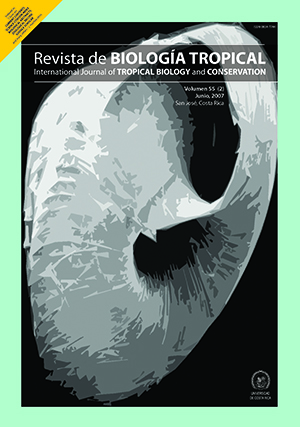Resumen
The genus Drepanotrema includes six species in Argentina. The life cycle in natural systems of Drepanotrema depressissimum, and D. lucidum has been little studied, except for some casual observations. The aim of this study is to analyze main population trends (age structures, recruitment periods, life span and curves of individual growth) in Paiva pond, Argentina. We explored growth model fitting and comparison methodologies between species and environments in Paiva pond and Isla Martín García (IMG), to determine interspecific patterns. Theoretical curves of von Bertalanffy's model for each population were contrasted with samplings using the χ2 test. Expected sizes were transformed into a percentage of maximum size and cohorts started from zero time, which allowed them to be independent of the real or estimated starting date and a comparison was possible. A similar time scale was used, because the k values proved to be sensitive to time scale. Maximum size reached by D. lucidum was 6.9 mm and by D. depressissimum 9.38 mm. Growth rates (k) fluctuated from 1.302 to 1.368 in the first and 1.339 to 1.509 in the second species. No statistically significant differences were found in growth curves among species inhabiting the Paiva pond and in the different IMG water bodies independent of the beginning of each cohort and maximum size. In general, no winter cohorts were observed, except in one population of D. kermatoides (IMG). Comparing circannual and biannual growth rhythms most of the species reached 60 % of their development during their first year, and 85 % or more during their second year.##plugins.facebook.comentarios##

Esta obra está bajo una licencia internacional Creative Commons Atribución 4.0.
Derechos de autor 2007 Revista de Biología Tropical
Descargas
Los datos de descargas todavía no están disponibles.


